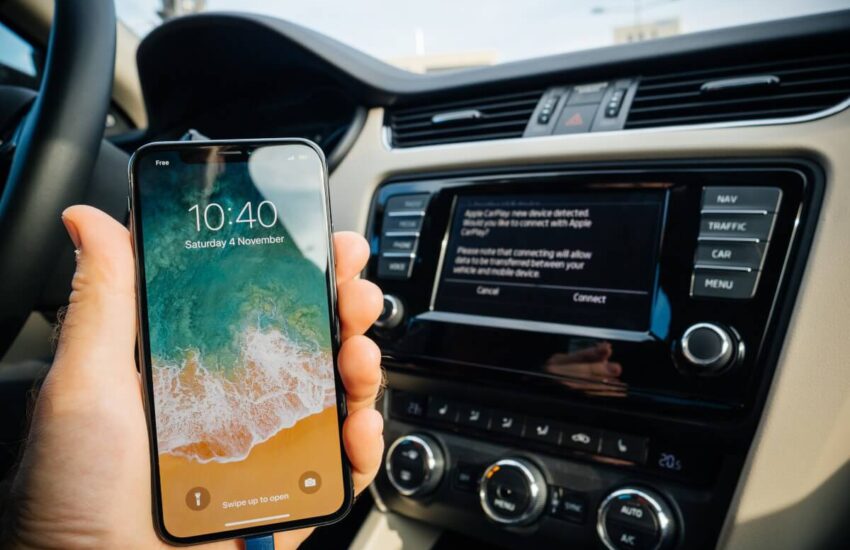As the intersection between the automobile industry and the tech world becomes increasingly intertwined, drivers today expect more from their new car technology than ever before. Apple CarPlay and Android Auto, developed by Apple and Google respectively, are two systems at the forefront of this integration, providing drivers with a seamless experience that mirrors the functionality of their smartphones. Let’s compare Apple CarPlay vs. Android Auto and take a closer look at the features, similarities, and differences between these two platforms.
Similarities: A Modern Driving Experience
Smartphone Mirroring: Both Apple CarPlay and Android Auto work by mirroring a simplified version of your smartphone’s interface to your car’s infotainment system. This means that familiar apps, icons, and user interfaces will appear on your car’s screen, reducing the learning curve for drivers.
Voice Assistants: Siri is to Apple CarPlay what Google Assistant is to Android Auto. Both platforms leverage their voice assistants to allow users to make calls, send and receive messages, play music, and even get real-time directions, all while keeping their hands on the wheel and eyes on the road.
App Ecosystem: Common applications like Maps, Phone, Messages, and Music are available on both platforms. Moreover, third-party apps such as Spotify, WhatsApp, and Waze are supported, although availability can vary based on the region and specific car models.
Touch, Knob, and Button Interface: Both systems are designed to be used through touchscreens, but they also support other input methods like knobs, dials, and buttons present in different car models, ensuring versatility across a range of vehicles.
Differences: Distinct Flavors of Innovation
User Interface:
Apple CarPlay: It retains Apple’s minimalist aesthetic, characterized by a clean interface with bold icons and a straightforward grid layout. The background is dark to reduce glare during night-time drives, and it seamlessly integrates the “Do Not Disturb While Driving” feature.
Android Auto: This system features a more dynamic interface, emphasizing cards and bubbles, resembling the Google Now interface. Its design is also adaptive, which can adjust based on the task at hand, like navigation or media playback.
Navigation:
Apple CarPlay: Initially, CarPlay solely used Apple Maps for navigation. However, recent updates have allowed third-party navigation apps like Waze and Google Maps.
Android Auto: Google Maps is the primary navigation tool, but Waze and a few others are also supported. Google Maps on Android Auto often provides real-time information on traffic conditions and even offers lane guidance.
Messaging:
Apple CarPlay: It allows reading and replying to messages using Siri. The integration feels seamless, especially if you’re used to using iMessage on an iPhone.
Android Auto: Google Assistant takes the lead here. In addition to SMS, it also integrates well with apps like WhatsApp, Telegram, and Facebook Messenger.
Customizability:
Apple CarPlay: Apple maintains a consistent look and feel, which means there’s limited customization available.
Android Auto: It’s more flexible in terms of personalization. Users can choose from different backgrounds, and the interface is more adaptive, often rearranging based on the apps you use the most.
Compatibility:
Apple CarPlay: Exclusively for Apple devices, primarily iPhones. iPads and iPod Touch are not supported.
Android Auto: Designed for Android phones, typically those running Android 6.0 (Marshmallow) or later.
Wrapping It Up
The choice between Apple CarPlay and Android Auto largely depends on the ecosystem you’re already invested in. If you’re an iPhone user, CarPlay offers a seamless extension of the iOS experience to your car. Android Auto, on the other hand, provides Android users with a familiar interface packed with Google’s suite of services.
Both platforms aim to make driving safer and more enjoyable by reducing distractions and offering a range of entertainment and productivity features. Ultimately, the best system is the one that aligns with your personal preferences and smartphone choice. As tech continues to evolve, we can anticipate even more features, integrations, and improvements in both these platforms in the coming years.
AutoByPayment.com offers accurate estimates of new and used car loan payments based on self-selected credit score, current rebates, down payment, and trade equity or negative equity, without customers having to provide their personal identifying information such as email and phone.
